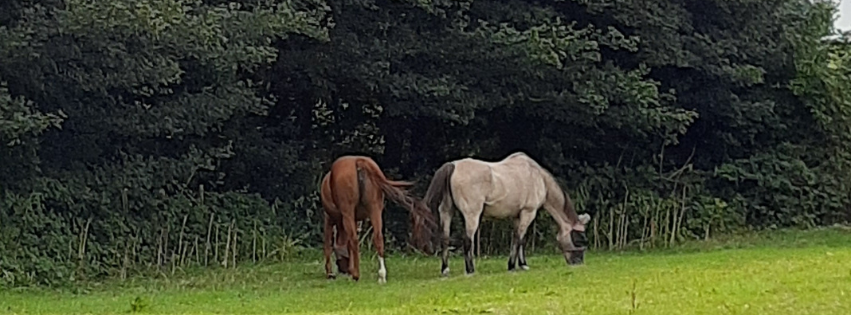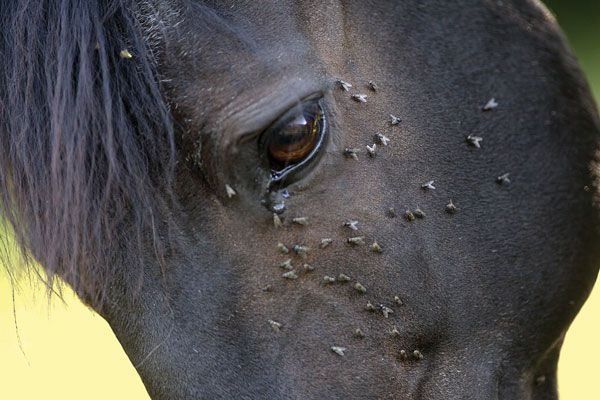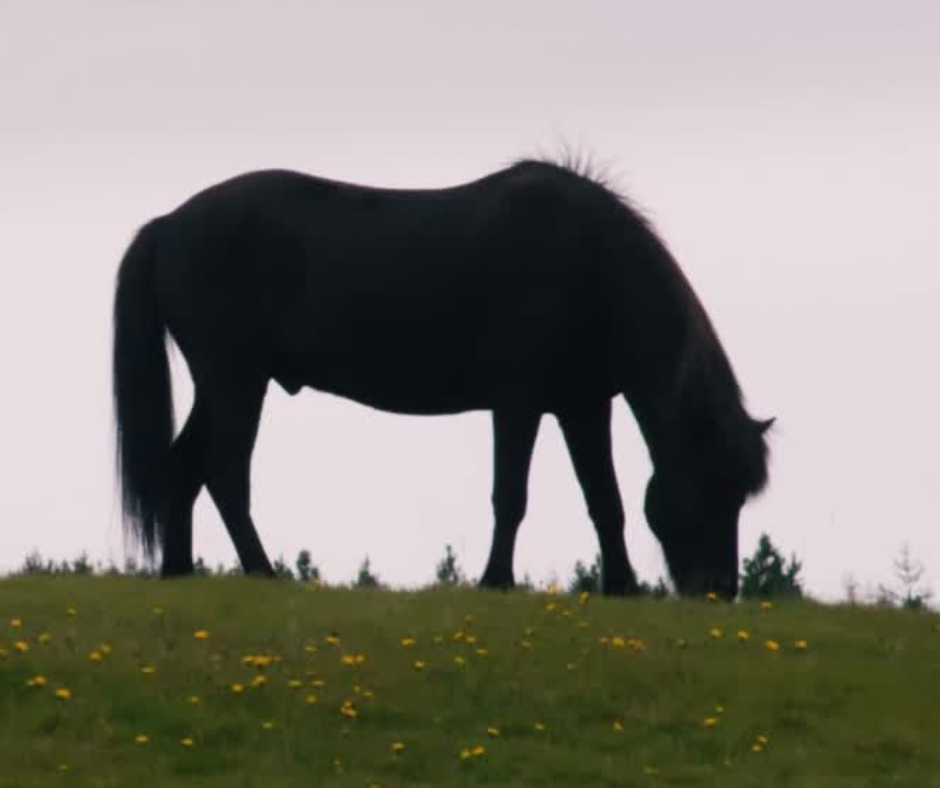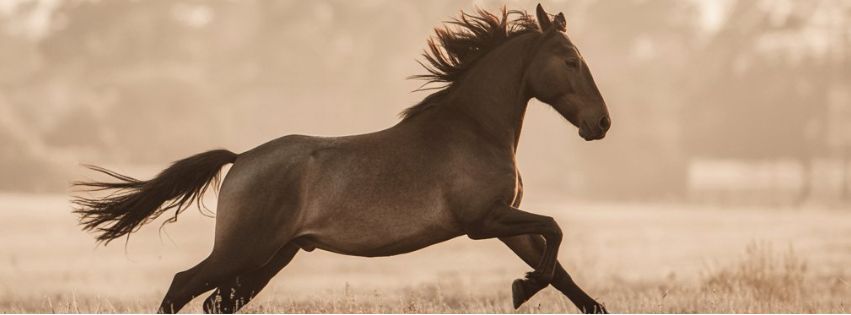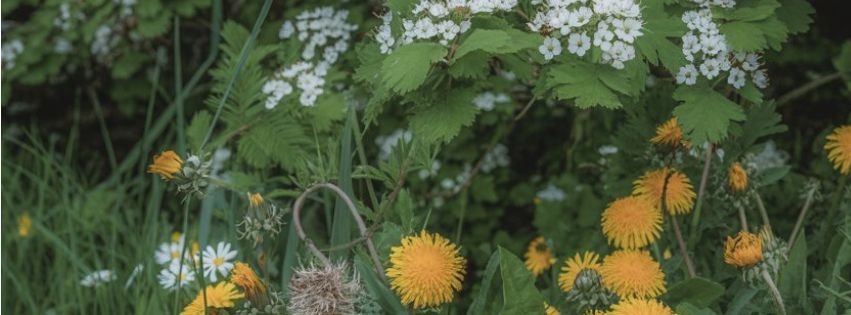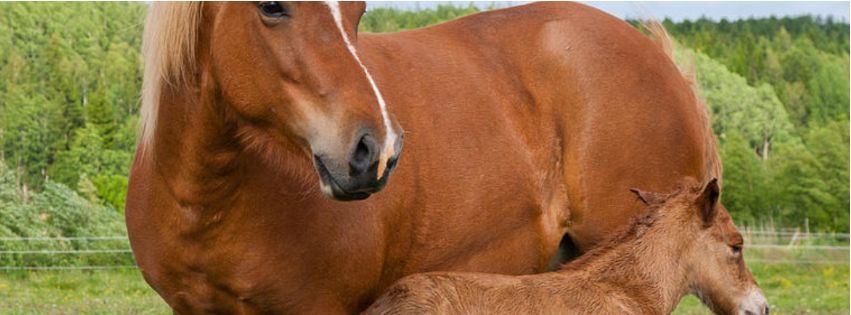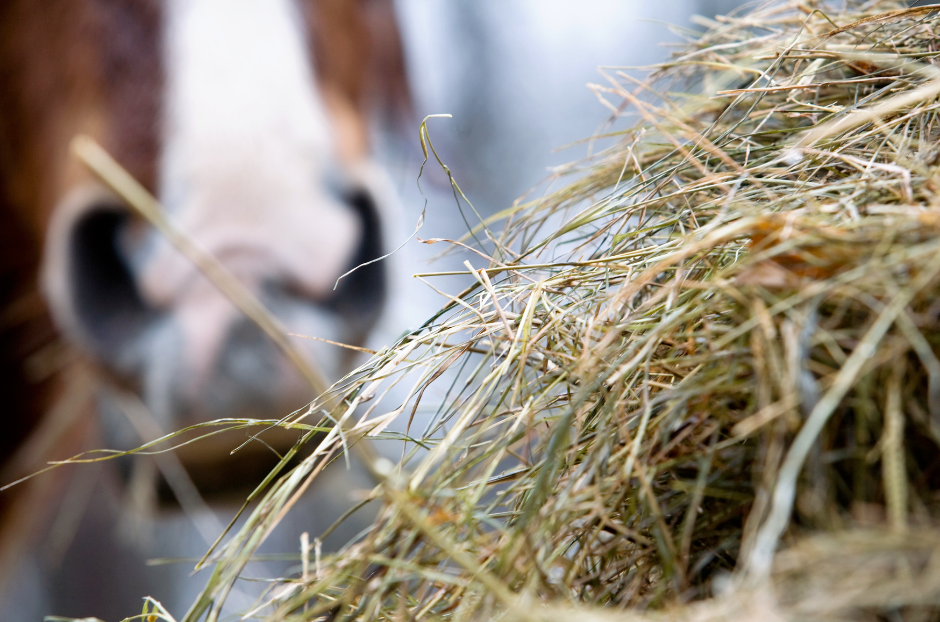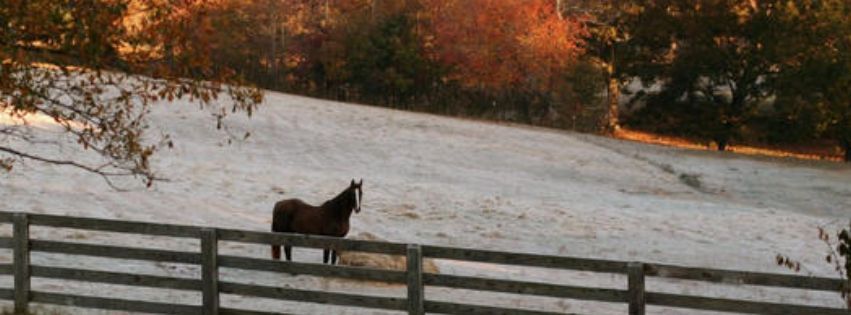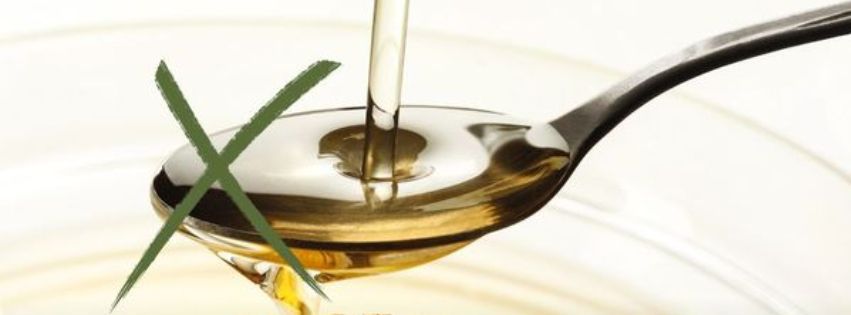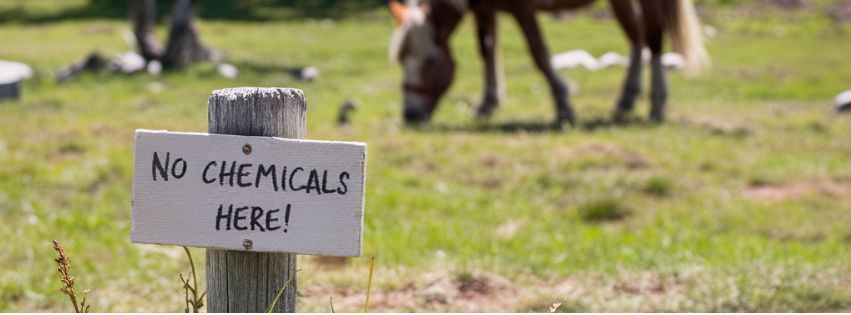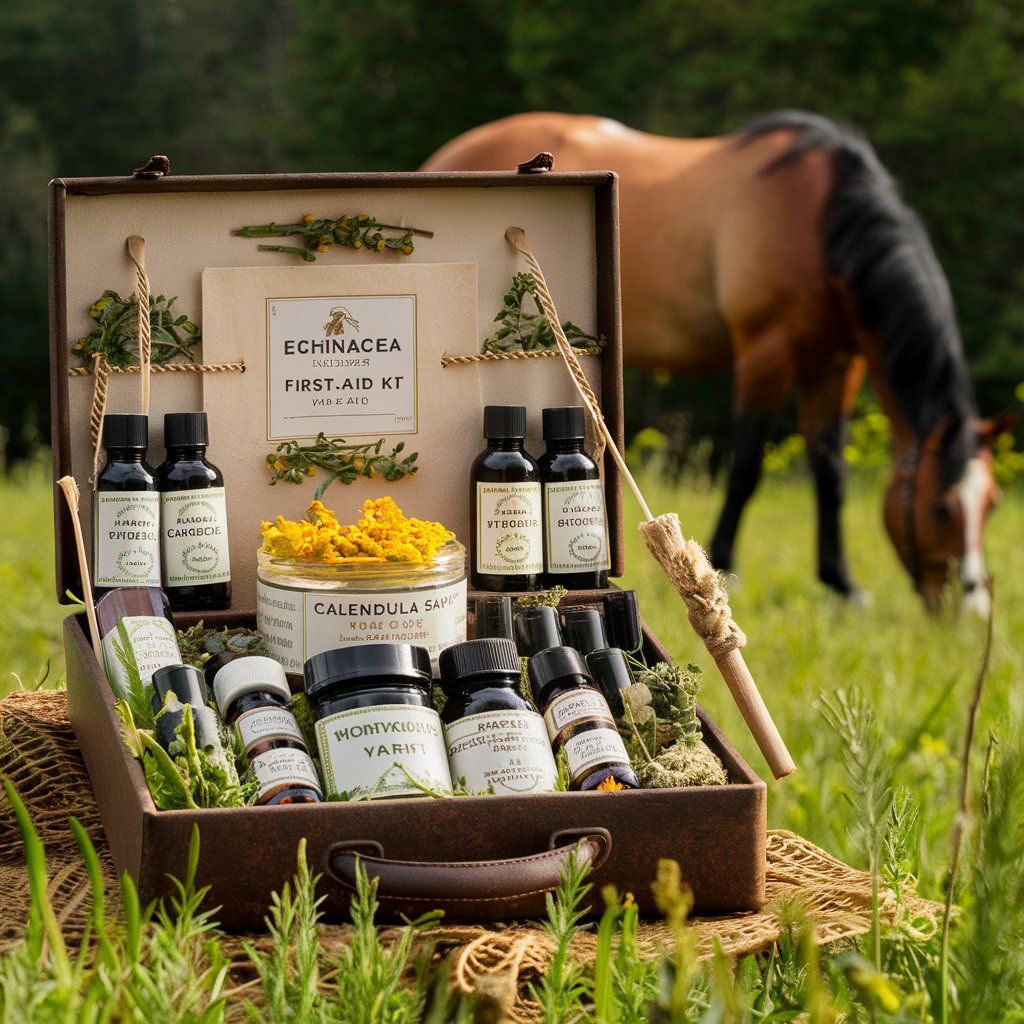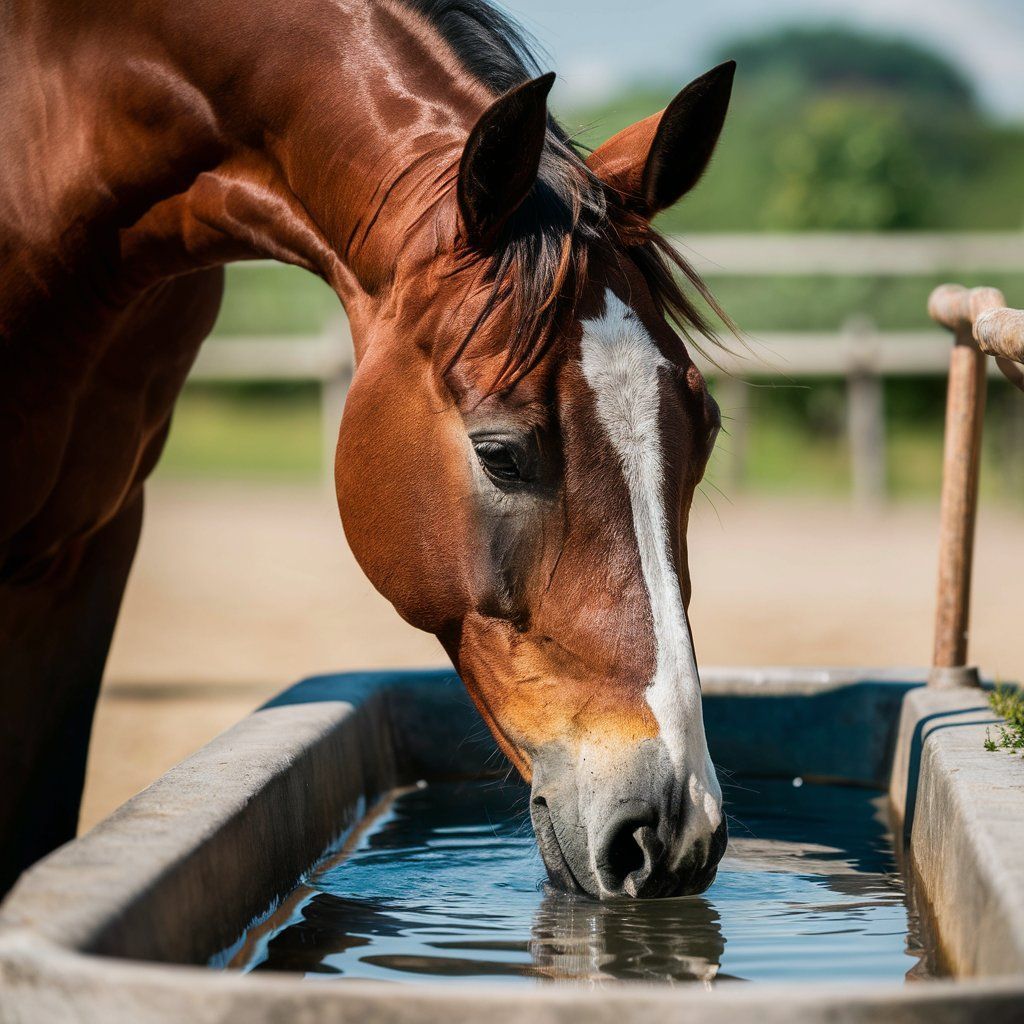The EquiNatural Blog
Image - EquiNatural's Murphy & Carmen May'23

I think – I hope! – we’re all feeling a bit like we’ve now transitioned out of winter and are seeing sunnier glimpses of spring (it was a long time coming this year for sure). With the arrival of warmer weather, this is the perfect time to delve into the many benefits of the wonderful Calendula officinalis for our horses. If you’re familiar with herbal systems that place a strong emphasis on the energetics of herbs, i.e. Ayurveda and Traditional Chinese Medicine (TCM), you’ll already appreciate the subtle effects that herbs can have on our bodies and minds. For example, there are warming nervines like ashwagandha, valerian, and tulsi, and cooling nervines like gotu kola, skullcap, and lemon balm. Depending on whether you run warm or cool, and depending on the imbalance you're addressing, you might prefer one over the other. Equally, if you’re into astrology, it may come as no surprise that planetary bodies can (apparently) also correspond to different herbs! Either way, an astrological perspective on plants can add a dimension to how we view and work with them, and this is the perfect time of year to start looking at plants associated with the sun. ☀️ When you think of the sun, you’ll likely think of it as warming, energising, fiery, life-giving, strong, powerful ... Plants associated with the sun also have similar qualities, i.e. Cinnamon is warming, St. John’s Wort is uplifting, and you can’t help but think of sunshine when you look at Sunflowers or Calendula. The good news is that Calendula is a valuable food for our horses, and here at EquiNatural we use a lot of Calendula, as you'll see below in our product list. So, what better than a Calendula Herb Nerd ?! We all know Calendula, sometimes called ‘ Bride of the Sun ’, as it's all over our gardens and packed full of cheerful yellow-orange blossoms, which bloom from late spring all the way through the first frosts of autumn (and self-seed like rabbits as well so you have been warned!). These sunny-looking flowers, like many other orange-coloured foods such as sweet potatoes and pumpkin, are remarkably rich in carotenoids , which benefit the eyes and immune system. We’ve all seen numerous salves and oils where Calendula is used extensively to soothe skin irritations and inflammation. And as a member of the Asteraceae family, Calendula is a relative of other helpful plants such as Chamomile, Yarrow, Dandelion, Echinacea, and Arnica. And just like its family members, Calendula has a plethora of wonderful benefits and uses. Uses Calendula has a long and extensive history of use and is probably best known as a skin herb. It soothes irritation and the discomfort of skin afflictions, while promoting skin repair through its vulnerary actions, curbing bleeding, and addressing infection. The German Commission has approved Calendula for easing inflammation of both external and internal mucous membranes and promoting healing of external wounds, which makes Calendula well known as beneficial for wounds, abrasions, rashes, burns, and bruising. Beyond skin injuries, Calendula can be used as a bodycare herb to help keep skin healthy and strong, reason being that is has a direct affinity with the lymphatic system. Why? Because Calendula has a direct affinity with the lymphatic system , helping to drain infection and reduce congestion from the skin and lungs, soothing swollen lymph glands, and along with Cleavers keeping the lymph fluid flowing. Calendula’s properties This awesome flower is full of so many useful properties. It assists in promoting healing of tissues ( vulnerary ), eases inflammation ( anti-inflammatory ), helps to stanch bleeding ( hemostatic ), and eases pain ( analgesic ). It also promotes tightening and toning of tissues ( astringent ), prevents or stops microbial growth ( antiseptic ), assists the body during illness by promoting perspiration ( diaphoretic ), and stimulates the lymphatic system ( lymphagogue ). Its slightly bitter flavour also supports digestion by gently stimulating the liver ( cholagogue ) to release bile, and it can equally stimulate menstrual activity ( emmenagogue ). As if that's not enough, it’s also used to soothe gastric irritations including ulcers. Calendula in the kitchen Calendula’s also been used for centuries as a food - its blossoms were used as both a soup starter and as a saffron substitute in the Middle Ages. To this day we can still enjoy Calendula flowers as a regular addition to many foods, the mild tasting flowers being easy to include in a wide array of foods for their nutritional content and herbal benefits. Simply pull the petals off fresh or dried flower heads and toss them into stews, soups, casseroles, sauces, egg dishes, rice and other grains, veggie and fruit salads, cream cheese, muffins, cookies, whipped butter, puddings, and so much more … 😉 A herb with history Calendula has an interesting history, much of which is based on the way it behaves, because it’s a phototropic plant, meaning it spends its days following the sun across the sky, hence why in days of yore it was called ‘the calendar flower’ because people could tell the time of year by its blooming. It was also extensively used for wound care in both the American Civil War and WW1, particularly when other emergency medical supplies had run low. With its potent anti-inflammatory and astringent actions, combined with its antibacterial, antiviral, and antifungal properties, it was a common choice for a wide variety of topical issues. Calendula in the herbal remedy cabinet Calendula is a sunny, cheerful herb that brings numerous benefits to both humans and horses alike. With spring well underway and summer soon to come, Calendula is a great herb to have on hand as it can be used in many simple herbal preparations. A simple cup of Calendula tea can be an extremely useful as a topical wash, or soak a cloth in the tea to make a compress for cleaning and soothing skin wounds, rashes, bug bites, and bruises. Dunk a cotton wall ball in cold Calendula tea and you have the perfect eye wash. From soothing skin irritations to supporting the lymphatic system, and even adding a nutritional boost to your meals, Calendula is a versatile and invaluable addition to any herbal repertoire. So with the sun out, here's a nifty home recipe to embrace the healing power of Calendula. Home recipe - frozen aloe & calendula cubes If you've ever wanted a quick sunburn cooler and soother, look no further. There are few things finer than getting the shorts on for a hot day's poo-picking, but we all know how it feels if we've been out in the UV rays longer than we should. But have no fear - herbalism is here! Ingredients 250g calendula-infused aloe vera gel 250g calendula flowers, either dried or fresh Create a calendula-infused aloe vera gel by filling a washed jam jar ½ full with 200g of the calendula flowers - keep the other 50g aside for Step 2. Pour in the aloe vera gel; make sure it covers the flowers, then cap the jar and store it in the fridge for 2-weeks. Strain out the calendula flowers after 2 weeks. Make a strong calendula tea by steeping the remaining 50g calendula flowers in 100ml hot water for at least 1-hour or better still, overnight. Drain, then combine the calendula tea with the calendula-infused aloe vera gel. Pour the mixture into an ice cube tray and freeze. When frozen, store in a Ziploc bag in the freezer. To use, remove an ice cube from the tray and glide it over those hot spots for a cooling effect that will instantly soothe burns and other hot skin issues. The moisture and benefits from the aloe vera gel act like a cooling protector, while the calendula soothes while it works its magic as it’s absorbed into the skin. Safety Calendula is generally considered to be a very safe herb. However, due to its action as an emmenagogue , it should not be used during pregnancy. Always ensure open wounds are fully cleaned before applying Calendula as like Comfrey, it rapidly repairs tissue. Where to find our organic Calendula Our individual Calendula officinalis - available in both organic tincture and dried flower form. Tincture - Calendula officinalis (Marigold) Petals, Cold Macerated 1:3 90%, Organic Cultivated Dried Flowers - C alendula officinalis (Marigold) Flowers, Organic Cultivated, Origin Egypt Calendula&Cleavers - Puffy legs or swollen lymph glands? our Calendula&Cleavers tones the lymph and keeps it moving. LKLCARE - supports and restores the body's vital detoxification organs, the liver, kidneys and lymph nodes, aka what I call t he '3-Amigos'. Recommended to feed twice a year just before each coat change, to assist in the protein biotransformation. LymphCARE - supports the healthy function of the equine lymphatic system, in the event of lymphangitis/CPL. OptimaCARE - our superior, functional 3-stage full-body cleanse/detox programme of regenerative phytonutrients (organic), known to clean up the gut function and detox/tone the body's natural detoxification organs and circulatory systems (blood and lymph). Supports the elimination of toxins, chemicals, heavy metals, pesticides, herbicides, toxic moulds etc. SwItchTonic - with antipruritic (anti-itch) properties from Chickweed , known to support and tone an itchy, irritated coat and skin. DermaCalm Gel - our antimicrobial derma support. An easily-absorbed synergistic blend of organic antimicrobial oils, known to support equine derma issues. Ideal for mud issues/cellulitis/rain-scald. JSTGel - topically supports stiff joints, soft-tissue injuries, and swelling. With healing comfrey and cooling menthols. (We have more reviews from us humans using this than we do horses! And I can speak from broken bone experience too 😎) SwitchGel - topical support for itchy, irritated coat/skin, with the potent anti-itch powers of Chickweed , and healing Calendula and Lavender oils. Particularly beneficial for sweet itch.






